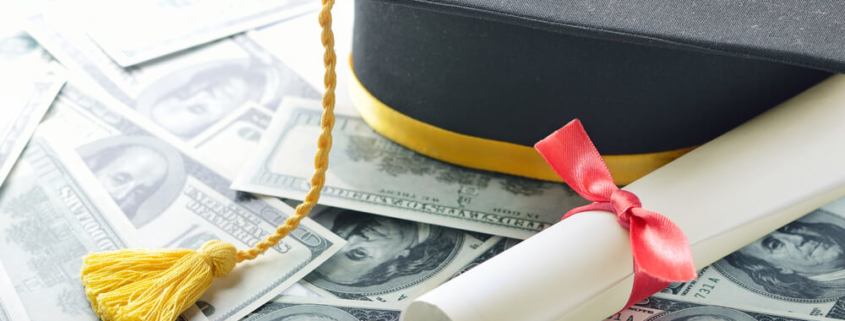Are Student Loans Dischargeable in Bankruptcy?
In 2020, student loan debt across the United States hit a whopping $1.56 trillion. Yes, trillion. This 1.56 trillion-dollar burden is borne by 45 million Americans. The only consumer debt category higher than student loans is mortgages. Credit card and automotive debt are dwarfed by student loan debt.
The class of 2018 graduated with an average student loan balance of $29,200, which was a 2% increase over the prior year according to the College Institute for Access and Success. For those burdened with student loans, the average student loan is $32,731 with an average repayment of $393 per month. However, the median student loan is $17,000 with the median repayment of $222 per month. This indicates that student loan balances are heavily skewed, with a smaller group subject to a disproportionally larger loan balance than others. Due to these overwhelming student loan balances, 10.8% of all student loans are 90+ days delinquent.
For many, the only reality of getting out from under student loans is through Chapter 13 bankruptcy. Filing bankruptcy is a very serious consideration and one that can have lasting implications. For many, the benefits of bankruptcy do not outweigh the consequences. Worse, for student loans, the government and courts have placed an onerous burden on borrowers to discharge their student loans in bankruptcy.
Student loans shouldn’t ruin your life. For many, credit counseling can help prepare a repayment plan and budget to allow successful repayment. However, for many Americans, repayment is simply impossible in their current situation. At Padgett & Robertson, we have seen first-hand the damage that student loans cause and will not stand for it. If you are struggling with student loan obligations, or are otherwise considering bankruptcy, please contact us today to schedule a free consultation.
How do I discharge my student loans in bankruptcy?
To discharge student loans in bankruptcy, borrowers must demonstrate that the loans cause undue hardship. Undue hardship in Georgia is determined by the Brunner test.
The Brunner test requires the borrower to prove three things:
- Based on current income and expenses, the borrower cannot maintain a minimal standard of living for himself or herself and any dependents if forced to repay the loans;
- Additional circumstances exist indicating that this state of affairs is likely to persist for a significant portion of the repayment period of the student loans; and
- The borrower has made good faith efforts to repay the loans.
Discharging student loans in bankruptcy is extremely difficult. Of all student loan borrowers who have declared bankruptcy, only 0.1% have sought to discharge their student loan; instead of focusing on discharging their other debts to allow them to repay their student loans. For many Americans struggling under the weight of student loans, bankruptcy may provide sufficient relief and should be considered carefully with an experienced bankruptcy lawyer.
Bankruptcy Attorney in Mobile, Alabama
At Padgett & Robertson, we help families in the Mobile area navigate through financial distress. In these unprecedented times, we are working harder than ever to protect families from the stress caused by financial difficulty. If you or your family are overburdened by debt, or if you have questions relating to your debts or bankruptcy, please contact us today to schedule a free consultation.





Leave a Reply
Want to join the discussion?Feel free to contribute!